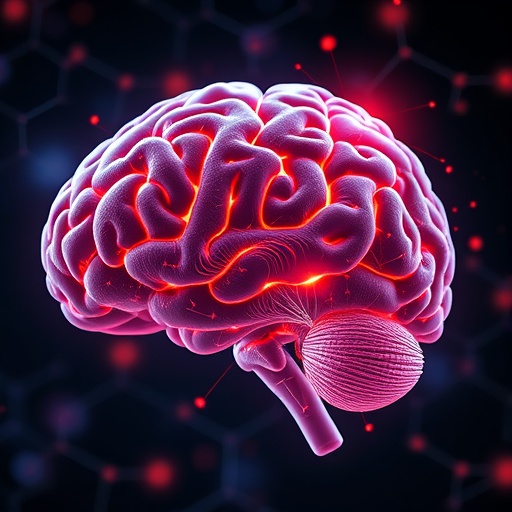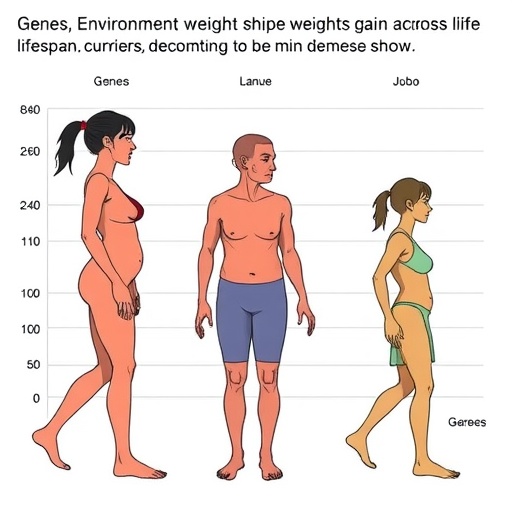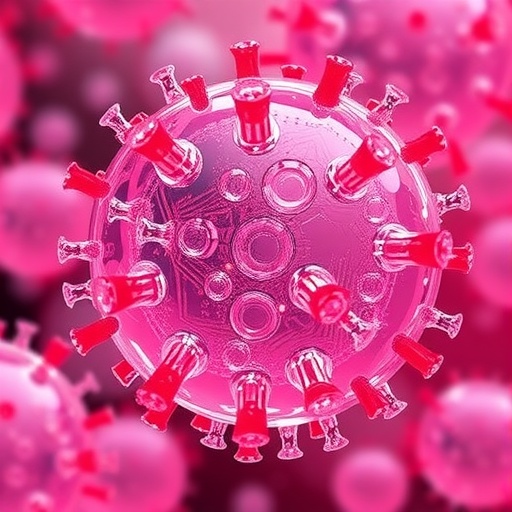In the intricate network of the brain, where billions of neurons communicate incessantly, energy is the currency that powers thought, memory, and consciousness. Traditionally, glucose has been heralded as the primary energy substrate fueling neuronal activity. However, recent groundbreaking research led by Kumar, M., Wu, Y., Knapp, J., and collaborators has unveiled a transformative understanding: triglycerides, long known for their role in peripheral lipid metabolism, serve as a critical fuel reserve supporting synaptic function within the brain. This revelation not only challenges established paradigms but also opens new vistas for understanding brain metabolism and neurophysiological health.
Neurons, the primary information-processing units in the brain, rely predominantly on a constant and efficient energy supply to maintain synaptic transmission. The synapse — the junction facilitating neuron-to-neuron communication — is a hotspot of energetic demand, where the rapid cycling of neurotransmitter vesicles and ion gradients necessitates an unceasing fuel supply. Historically, glucose metabolism has been viewed as the central mechanism addressing these needs. However, recent evidence from Kumar and colleagues suggests an auxiliary, yet indispensable, role for lipid-based stores particularly triglycerides in safeguarding synaptic performance under various physiological conditions.
Triglycerides, a main form of stored fats composed of glycerol and three fatty acid chains, have typically been studied in the context of systemic energy balance and adipose tissue function. Their recognition as an intrinsic component of neuronal energy metabolism within the brain marks a notable paradigm shift. Kumar et al.’s study utilized sophisticated lipidomic profiling coupled with advanced neuroimaging and electrophysiological techniques to dissect how triglyceride reservoirs within neural tissues are mobilized to sustain synaptic energetics, especially during periods of heightened activity or glucose scarcity.
.adsslot_h4zEAlfRcg{width:728px !important;height:90px !important;}
@media(max-width:1199px){ .adsslot_h4zEAlfRcg{width:468px !important;height:60px !important;}
}
@media(max-width:767px){ .adsslot_h4zEAlfRcg{width:320px !important;height:50px !important;}
}
ADVERTISEMENT
One of the cornerstones of this research lies in demonstrating that neuronal lipid droplets, intracellular organelles storing triglycerides, are more than passive fat repositories. These droplets engage dynamically with mitochondria—the cellular powerhouses—facilitating the hydrolysis of triglycerides into free fatty acids that undergo beta-oxidation to generate ATP locally at and near synapses. This metabolic crosstalk ensures that synaptic terminals retain robust functionality, even as glucose availability fluctuates, thus preserving cognitive functions that are foundational to learning and memory.
The findings further elucidate the molecular machinery orchestrating triglyceride metabolism in neurons. Enzymes such as adipose triglyceride lipase (ATGL) and hormone-sensitive lipase (HSL), previously characterized in peripheral tissues, are expressed in synaptic compartments and modulated in response to neuronal activity. Their timely activation triggers the breakdown of triglycerides stored in neuronal lipid droplets, liberating fatty acids that fuel mitochondrial respiration. Kumar et al. also identified regulatory pathways involving AMP-activated protein kinase (AMPK) signaling, which senses cellular energy stress and orchestrates lipid mobilization accordingly.
From a physiological perspective, this triglyceride-fueled energy system provides a metabolic buffer, enabling synapses to sustain high rates of neurotransmission during metabolic stress or prolonged activity bursts. This mechanism may prove essential in conditions where glucose supply is compromised, as in ischemia, hypoglycemia, or neurodegenerative disorders such as Alzheimer’s disease. The metabolic plasticity conferred by triglyceride mobilization could therefore represent an intrinsic neuroprotective strategy, enabling neuronal networks to maintain functional integrity amidst energetic challenges.
The implications extend beyond basic neuroscience to clinical realms. Understanding how triglyceride metabolism influences synaptic health offers promising avenues for therapeutic interventions targeting energy dysregulation in neurodegeneration and brain injury. Modulating lipid droplet dynamics or enhancing neuronal lipolysis pathways could emerge as strategies to bolster synaptic resilience and cognitive function. Moreover, these insights may refine nutritional and pharmacological approaches aimed at optimizing brain metabolism in aging populations or those with metabolic syndromes impacting cerebral glucose utilization.
Methodologically, the study leveraged cutting-edge mass spectrometry for spatially resolved lipidomics, allowing precise quantification and localization of triglyceride stores within brain sections. Complementary to this, live-cell imaging and synaptic physiology assays unveiled functional correlations between triglyceride metabolism and synaptic efficacy. These integrative approaches unveiled the dynamic interplay between lipid metabolism and neuronal signaling with unprecedented clarity, setting a new benchmark for studying brain energy homeostasis.
This research also contextualizes triglyceride metabolism within the broader landscape of brain fuel utilization, which encompasses glucose, ketone bodies, and lactate. The ability of triglycerides to serve as an on-demand, localized fuel source reshapes our understanding of metabolic hierarchies in the nervous system. It suggests that the brain has evolved multifaceted, compartmentalized energy strategies to cater to the immense and heterogeneous energy needs of its cellular constituents, especially in synaptic microenvironments.
Furthermore, the study brings attention to how disruptions in intracellular lipid handling may underlie synaptic dysfunction observed in neurological diseases characterized by metabolic impairments. For instance, mutations or dysregulations affecting lipid droplet-associated proteins or lipase enzymes could impair fuel mobilization at synapses, contributing to synaptic failure and cognitive decline. Identifying such molecular defects could illuminate novel biomarkers or therapeutic targets.
From an evolutionary standpoint, the presence of triglyceride reserves within neurons may reflect adaptation to fluctuating energy availability, allowing the brain to maintain critical functions during fasting or other metabolic stresses. This notion aligns with observations that during prolonged starvation, when peripheral lipid metabolism intensifies, the brain may supplement its energy production beyond glucose and ketone bodies by locally mobilizing triglycerides.
As neuroscience continues to unravel the complexities of brain function and dysfunction, integrating lipid biochemistry into models of neural energetics is poised to yield transformative insights. The intersection of lipid metabolism and synaptic physiology highlighted by this study stands as a testament to the intricate metabolic orchestration underpinning the brain’s remarkable computational abilities and adaptability.
Subject of Research: The role of triglycerides as a localized fuel reserve supporting synapse function and neuronal energy metabolism in the brain.
Article Title: Triglycerides are an important fuel reserve for synapse function in the brain.
Article References:
Kumar, M., Wu, Y., Knapp, J. et al. Triglycerides are an important fuel reserve for synapse function in the brain. Nat Metab (2025). https://doi.org/10.1038/s42255-025-01321-x
Image Credits: AI Generated
Tags: brain energy reserves and triglyceridesenergy substrates for neuronsglucose vs triglycerides in brain energyinnovative research on brain metabolismlipid metabolism in the brainlipid-based energy sources in neuroscienceneuronal communication and triglyceridesneurophysiological health and energy supplysynaptic transmission and metabolismtriglycerides and brain functiontriglycerides impact on memory and cognitiontriglycerides role in synaptic performance





